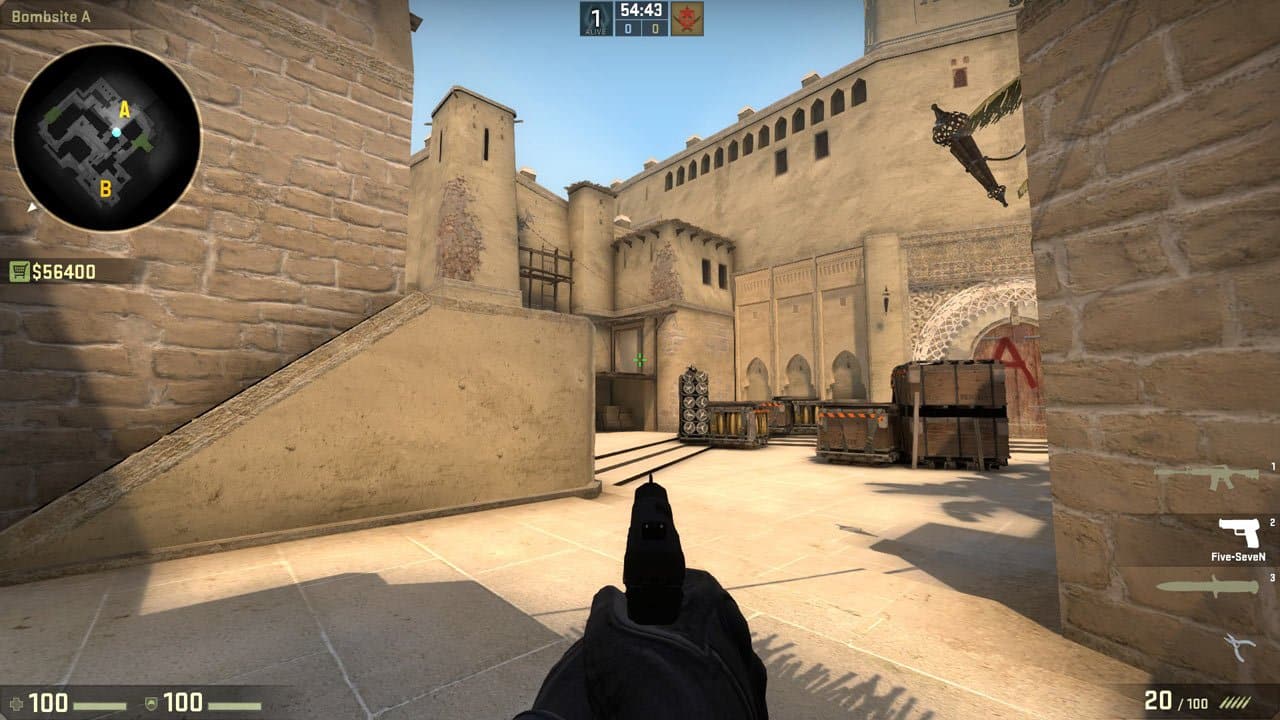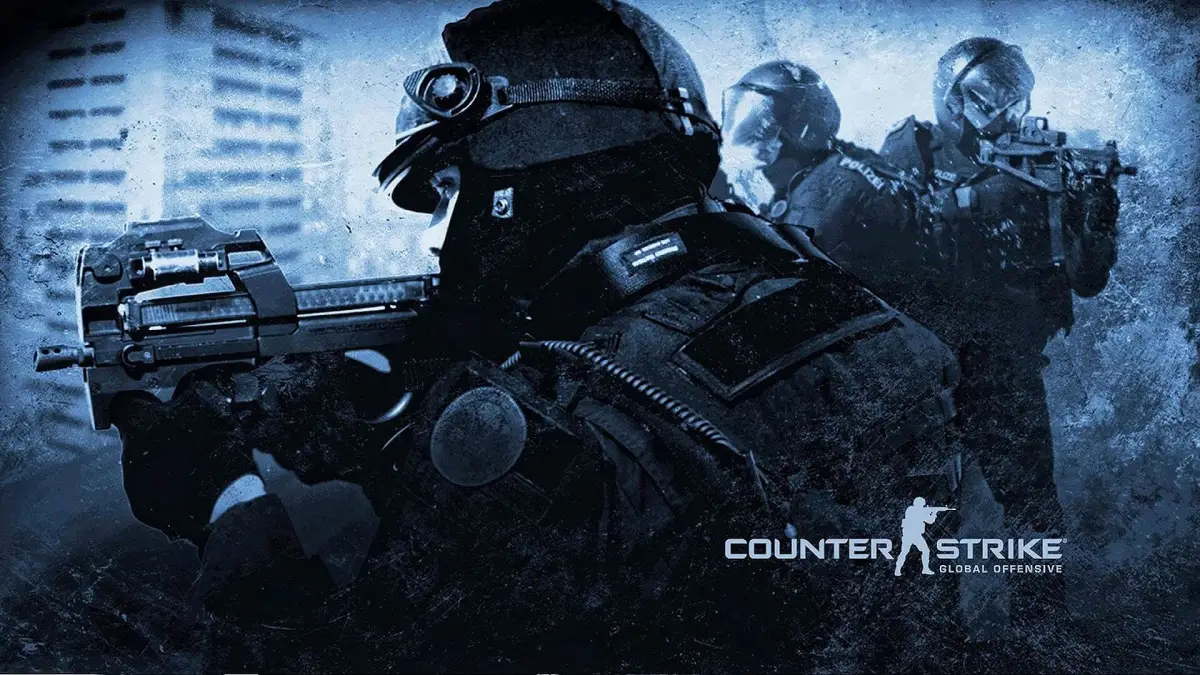I’m a die-hard single-player enthusiast. Stories and the pleasures of playing solo get my motor going, yet people always tell me that I’m missing out by ignoring the multiplayer realm. Well, I figured I’d finally see what all the fuss is about and see just how wrong I’ve been all these years. The first game on the list, Counter-Strike: Global Offensive, is one I got for free with my PC a few years back and never bothered to install until just now, but there are other reasons why I thought it would be a good choice to kick off this little experiment.
Why Counter-Strike: Global Offensive?
Although I have long been an adherent of the single-player experience, one of my earliest communal memories of video games is from back in high school, when at lunchtime sometimes, we’d crowd into a computer lab to play round after round of Counter-Strike: Source via LAN. The physical presence and the banter made those sessions pass like seconds. It was all great fun.
I remember fast-paced matches and an engaging, repeatable play loop. Most of all, I remember the mood. Hardly a utopian ideal of mutual respect, but a visceral reaction of fleeting rivalries and partnerships. Those of us who played then may long since have drifted apart, but intractable schoolyard bonds were formed in that room.
In choosing Global Offensive as my first attempted deep dive into online multiplayer, of course I didn’t expect to recapture that sense of camaraderie, but maybe the familiarity would make something click.
Maybe that was my mistake.
I don’t play first-person shooters often. When I do, I tend to play them cautiously, picking my way forward as carefully as possible. That play style has remained the same across Doom (2016), Bethesda’s Wolfenstein games, Sniper Ghost Warrior Contracts, and others. It works better for some games than others, but it’s usually a viable strategy, even if it does sometimes devolve into balls-to-the-wall bullet ballets. Not so in Counter-Strike.
To be sure, it works well enough against bots; they rely on the same kind of AI patterns found in single-player shooters. Stepping into the arena with other players was like switching from rugby league to rugby union — the pieces remain the same, but the rules are different (and those of the latter are beyond me). Contrary to the dire proclamation of the Fallout series, war has changed.
It was like some bizarre parody of “The Time Warp”:
It’s just a jump to the left
And then a step to the right
With your hands on your hips
You bring your knees in tight
Avatars bobbing and weaving, dancing from side to side, jumping on random objects. A madcap masquerade ball as players avoid standing still to make a target of themselves. It means you need lightning-fast reflexes and an almost preternatural ability to get your crosshairs centered on enemies.
Needless to say, I sucked.

But not always to the same extent. I tended to perform better in the tighter maps. I think that goes back to the pattern recognition developed in campaign-led shooters, where enemy paths and positions are relatively predictable. Rarely will you be one-shot killed by a sniper hidden in a window. Rarely do you have to worry about enemies sneaking up from behind. Playing against others demands a level of environmental awareness that no single-player shooter has ever required of me.
I found that manageable on the smaller maps, where the corridor-and-courtyard level design mirrors that of linear campaign shooters. In others, with sniper’s nests, multiple stories, and an open-design ethos, I was like a lamb to the slaughter.
Dying in almost every round was a bit frustrating, but after only a few hours, I found myself getting better, more aware of my surroundings and the intricacies of the map layouts. And the rapid rounds and straightforward objectives make jumping back in for another match a reward in itself.
There’s a lot to like in Counter-Strike: Global Offensive, yet it didn’t grab me like Source did way back in the mists of time. Why not?
The largest part of it was probably the lack of connection with other players. Of course, you can still chat through your headsets, but that’s not the same as calling someone out from the other side of a room. The cheating, racism, and random abuse, though far rarer than I was anticipating, certainly didn’t help to interest me in getting to know the people behind the avatars.

Beyond that, I’d say the law of diminishing returns was in full effect. As mentioned, I got slightly better as time went on, but there was no tangible reward for that improvement beyond more in-game currency. After a time, I felt no drive to experiment with more weapons, more gadgets, or more maps because after 12 hours, the fundamentals of play hadn’t changed.
I’ll admit that a key factor in my constant engagement with Bethesda’s Wolfenstein games, for example, was the storytelling, but that was combined with variation — stronger enemies, bosses that demand novel strategies, levels that invite stealth-based play, modification of physics, and totally outlandish weapons only available in specific situations. Counter-Strike has variation, of course, but it’s more subtle, strategic. It’s in the weapons you use and the paths you take. The pacing remains constant.
By the 12-hour mark, my interest in continuing had dissolved, as I had feared it would. The gameplay remained as compelling as ever, but the frame, for me, had lost its spark; the hyper-competitiveness simply didn’t maintain my interest in and of itself.
I may return to another game with that approach to multiplayer at some point, perhaps to Call of Duty: Warzone or Fortnite or Apex Legends, but next time, I think I’ll try the shallow end with a game that I’m more confident I’ll enjoy.






Published: Apr 4, 2020 02:45 pm